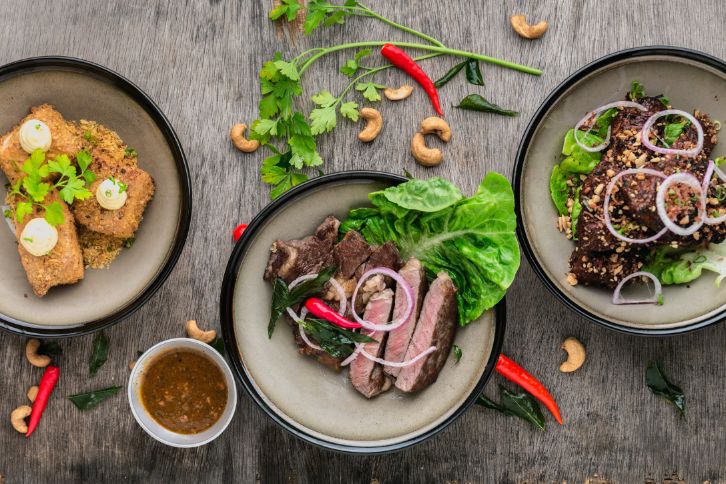Saxenda is a once-daily injectable drug used to treat patients with other weight-related health issues who are overweight or obese. Despite the fact that Saxenda has no known interactions with food, your healthcare provider may advise using it in conjunction with a diet and exercise regimen.
What Is Saxenda?
As part of a weight-loss regimen, Saxenda is injected once per day. If you are overweight and have a medical condition like diabetes or high blood pressure, your doctor might prescribe Saxenda to you. Liraglutide, a GLP-1 analog also known as a GLP-1 receptor agonist, is the main component of Saxenda.
Your body produces GLP-1, also known as glucagon-like peptide-1, naturally. GLP-1 controls the production of insulin, appetite, and blood sugar levels. To make you feel less hungry, liraglutide in Saxenda imitates the effects of GLP-1.
When you first start taking Saxenda, your doctor will give you a dosing schedule. Saxenda’s maintenance dosage is typically 3 mg per day, but always heed your doctor’s instructions. Your upper arm, thighs, or waist can be injected with the Saxenda pen. To minimize side effects, you should frequently switch where you inject.
Under the trade name Victoza, liraglutide is also utilized in the management of type 2 diabetes. If you are already taking Victoza to treat your diabetes, you shouldn’t take Saxenda.
How Does Saxenda Work?
Saxenda functions by simulating the hormone GLP-1, which is naturally produced by your body and released after eating. GLP-1 decreases hunger while also telling the pancreas to start producing insulin.
One of your body’s built-in responses to losing weight is addressed by Saxenda. It functions similarly to GLP-1 by controlling your appetite, which may cause you to consume fewer calories and lose weight.
As directed by your healthcare provider, administer Saxenda by intramuscular injection into the upper arm, upper leg, or abdomen. A muscle or vein should not be injected.
No matter when you eat, Saxenda is typically taken once daily, at any time of the day.
What Does Saxenda Do?
Saxenda increases how satisfied you feel after eating, which aids in managing weight loss. You must consume fewer calories and engage in consistent exercise for Saxenda to work as effectively as possible.
Saxenda users who consume high-calorie foods may still put on weight. So, especially for foods high in fat, you should cut back on your portion sizes of these kinds of foods.
Saxenda also slows down gastric emptying. The rate at which your stomach empties into your small intestine is called gastric emptying. Your feeling of hunger will decrease as a result of the slower gastric emptying, which means you won’t feel like eating a lot of food.
You might feel queasy or throw up when you first start taking Saxenda. Try to be patient for a few days because it will take your body some time to adjust to the medication.
Some medical conditions, such as thyroid disorders, can slow your metabolism, which can make losing weight more difficult. Some prescription medicines or over-the-counter products can also cause weight gain as a side effect.
A dietitian can help you create an eating plan that is right for you if you have any other medical issues that have an impact on your weight.

What Foods Should I Avoid On Saxenda?
When taking Saxenda, there are no foods that are “off-limits.”
However, a healthcare professional may advise using the medication in addition to dietary and exercise modifications as well as other lifestyle and behavioral changes.
Your dietary advice should be tailored to your medical background and health objectives, but it is likely that it will include a low-calorie diet.
Ultra-processed Foods
The majority of the foods that make up the modern Western diet are “processed” in some way, such as bread, cheeses, tinned fish, and canned vegetables.
The majority of these minimally processed foods maintain their nutritive qualities and are beneficial elements of a regular diet.
The majority of the ingredients in ultra-processed foods, on the other hand, are extras (such as salt, sugar, and fat), and they are high in calories.
These foods can increase calorie intake and cause weight gain, according to research, if consumed frequently.
Sodas, deli meats, packaged chips, cookies, and cakes are a few examples of ultra-processed food items.
Ultra-processed foods do not interact negatively with Saxenda, but they may increase the likelihood of gastrointestinal side effects, such as nausea.
To maximize the potential advantages of weight-loss medication, limit the consumption of ultra-processed foods.
Alcohol
It is acceptable to consume alcohol while taking Saxenda, but you should be cautious about how much you consume.
Saxenda users who consume excessive alcohol run a higher risk of developing hypoglycemia or low blood sugar.
Heavy alcohol consumption should be avoided while taking Saxenda because it can increase your risk of developing pancreatitis.
Sugary Foods
Saxenda doesn’t require you to give up all sweets, but it’s important to discuss with your doctor how sugary foods can affect your health and weight loss objectives. Furthermore, Saxenda’s side effects may be exacerbated by sugary foods.
Try avoiding sugary foods to see if that lessens the intensity and frequency of any nausea or other gastrointestinal side effects you may be experiencing from the medication.
Salty Foods
While eating salty foods while taking Saxenda is not strictly forbidden, it may not be in your best interest to achieve your weight loss and health goals.
While taking the medication, eating salty foods may also make gastrointestinal symptoms more likely.
Fast Food
Fast food is a broad term that generally refers to foods that are highly processed and high in salt, sugar, and fat. In most cases, eating fast food shouldn’t replace a wholesome, well-balanced diet. Avoiding fast food may also lessen the possibility of Saxenda’s gastrointestinal side effects.
Foods High In Saturated And Trans Fats
Similar to fast food, foods high in saturated and trans fats should be avoided as part of a balanced diet. By avoiding them, you can lessen Saxenda’s side effects, which can also be exacerbated by these foods.
What Foods Should I Eat On Saxenda?
While using Saxenda, it’s crucial to eat wholesome, filling foods.
Saxenda users should follow an exercise regimen in addition to adhering to their doctor’s diet advice if they want to lose weight.
The specific foods you consume while taking Saxenda will depend on your health, eating habits, cultural preferences, and religious convictions.
When taking Saxenda, you can eat a variety of foods, including:
- plenty of fresh or frozen fruits and vegetables
- potatoes or butternut squash
Whether you eat meat, are a vegetarian, or are vegan, there are many protein options available:
- eggs
- beans or lentils
- chicken, fish, or other lean meats
- dairy products like yogurt, or dairy alternatives
- tofu
Saxenda can help you lose weight, so you can get creative with the foods and meals you prepare. Even if a recipe calls for a high-calorie ingredient, you can always swap it out for a more nutritious but lower-calorie food.
Conclusions
While taking Saxenda (liraglutide), there are no particular foods you must stay away from. However, your healthcare provider may advise you to follow a low-calorie diet and up your physical activity level.
Be aware that hypoglycemia, or low blood sugar, is one of Saxenda’s frequent side effects. How to handle low blood sugar should be explained to you by your doctor or pharmacist.




